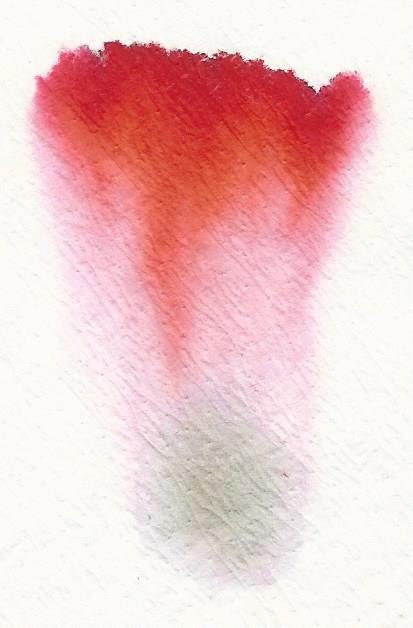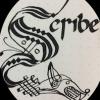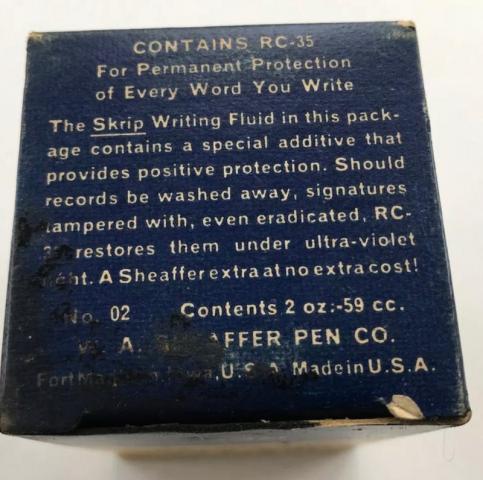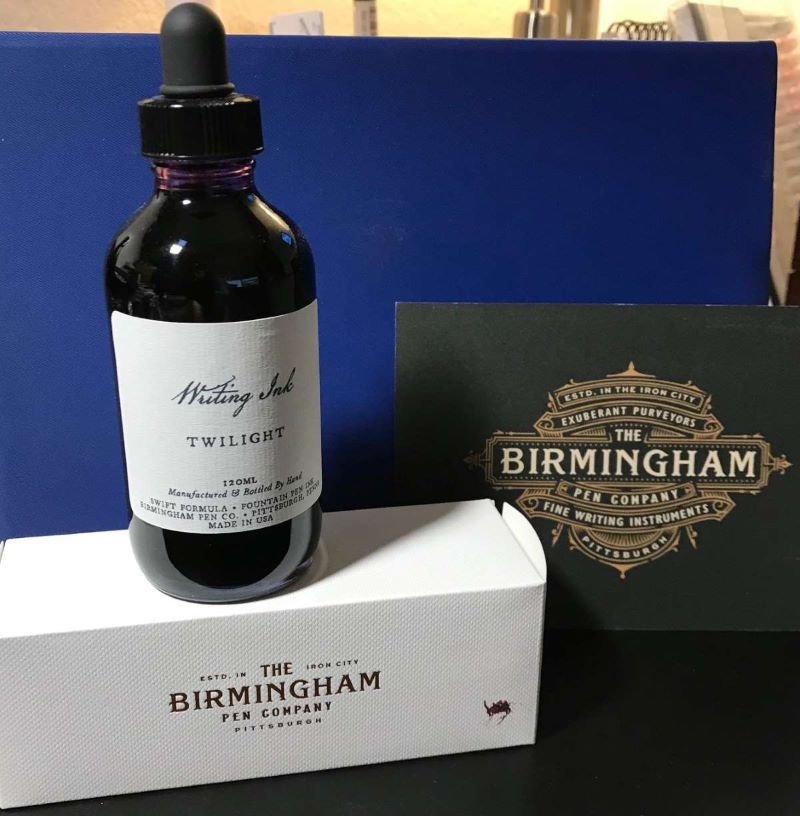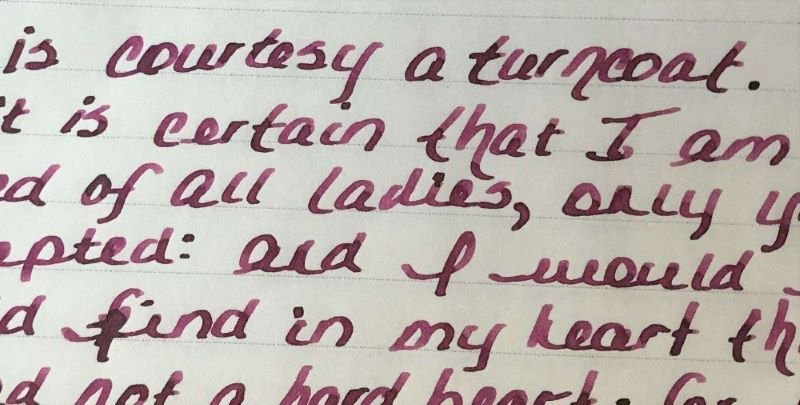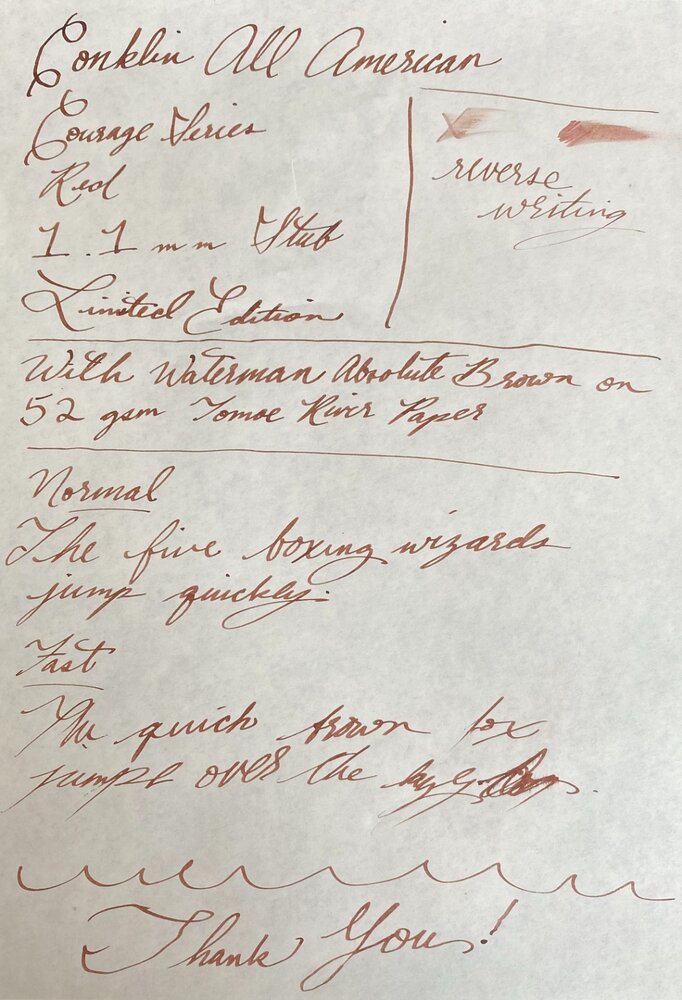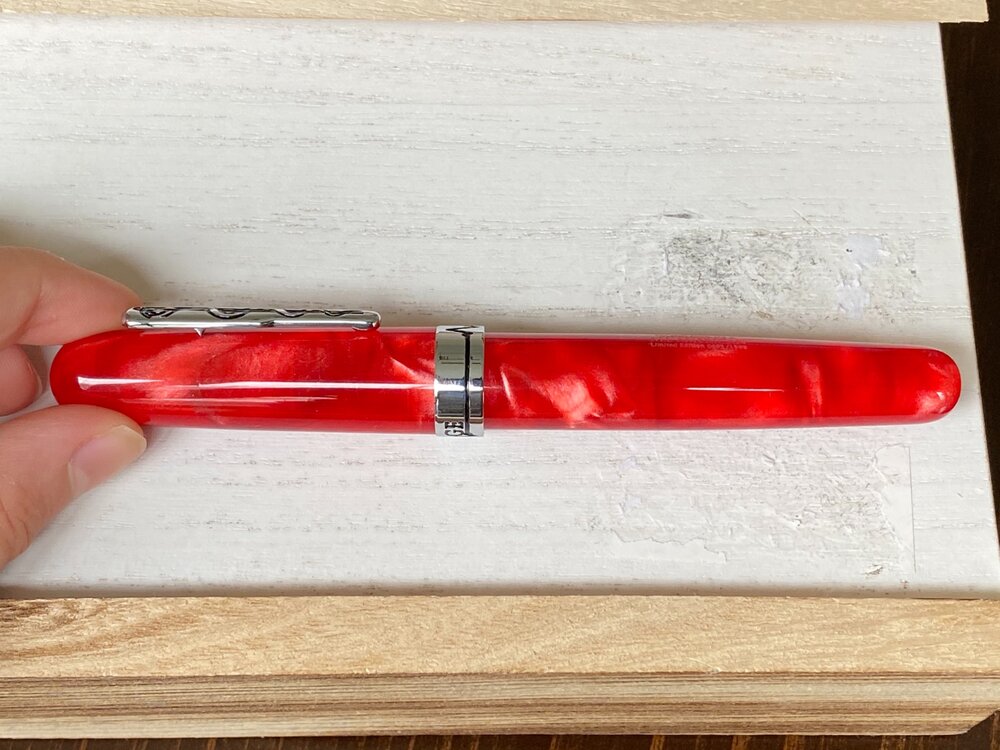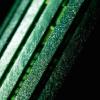Search the Community
Showing results for tags 'red'.
-
Teranishi Guitar – Modern Red Teranishi Chemical Industries – based in Osaka, Japan – was founded during the Taisho period around 1916, and got quite some fame as one of the earlier ink producers in Japan. For their 105th anniversary, the company introduced some st...
- 5 replies
-
- teranishi guitar
- modern red
-
(and 1 more)
Tagged with:
-
Pelikan Edelstein Garnet In 2011 Pelikan introduced the Edelstein series of high-end inks, available in a variety of colours. The theme of the Edelstein concept is the gemstone – each ink corresponds to the beautiful colour of a gem. The Edelstein line of inks is presented i...
-
Diamine Blood Orange (150th Anniversary II) The ink maker from Liverpool is one of the staple brands in ink-land. They consistently produce solid inks for a very reasonable price. In 2017, Diamine released their second ink series to commemorate their 150th Anniversary. I obtained my set shor...
- 8 replies
-
- diamine
- blood orange
-
(and 3 more)
Tagged with:
-
Like it’s document sibling, Artist red reminds me of watermelon juice or coral red to quote @lapis I honestly cannot see much of variation between the two. If you need a document red ink go for the sibling, if not Artist is fine. The bottles are different, Artist is 50 ml. Let's start w...
- 8 replies
-
- de atramentis
- artist inks
-
(and 2 more)
Tagged with:
-
This ink like and it’s artsy sibling reminds me of watermelon juice. It’s a pinkish red. I’ve done a back-to-back review of both and frankly I don’t see much of a difference between them other than Artsy is slightly darker. The ink is nothing like Noodler's Fox Red, that I reviewed recently....
- 12 replies
-
- de atrementis
- document ink
-
(and 2 more)
Tagged with:
-
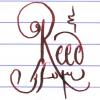
Büroservice Bergmann Rotfliessende Eisengallustinte (Red flowing Iron gall)
yazeh posted a topic in Ink Reviews
My original review was deleted thanks to the server problem. So, I'm reposting it. Another great ink for Iron gall ink lovers. The name is quite a mouthful. Thanks to @christof for introducing them to me. They are made in Germany and exclusively sold from this site, by the maker, Tho...- 12 replies
-
- iron gall
- büroservice bergmann
-
(and 1 more)
Tagged with:
-
TACCIA Ukiyo-e Utamaro benizakura TACCIA is a Japanese stationery company, that is part of the Nakabayashi group. They offer high-quality fountain pens, inks, pen-rolls, notebooks, etc. More specifically, TACCIA produce a line of inks, inspired by the unique look of Ukiyo-e paintings from Ja...
- 8 replies
-
- taccia ukiyo-e
- utamaro
-
(and 2 more)
Tagged with:
-
Saw a pic of the top of an old Skrip Permanent Red, and it says this: Sounds fantastic! Does anyone know to what this is referring, did it work, and does the modern Red Skrip still contain anything like this?!
-
I have a bottle of Diplomat red ink. I have used it very rarely. I haven't even fully filled a converter with it... I don't like the colour but someone else might. I don't charge money for the ink, but I do need you to cover the shipping costs. I live in the Netherlands. First come first serve....
-
I haven't done any ink reviews in a long time, but I also haven't acquired any inks in a long time. I wasn't really looking for any inks but was looking through the Taccia inks and noticed some new ones. Since Taccia was bought by Nakabayashi, it seems like the Taccia brand is being used to offer in...
- 12 replies
-
- taccia
- nakabayashi
-
(and 2 more)
Tagged with:
-
Lovely, well-behaved ink from Kerala, India. https://krishnainks.com/ Apologies for the chicken (blood) scratch 😞
- 4 replies
-
- ink
- krishna ink
-
(and 1 more)
Tagged with:
-
Dear fellow Montblanc fans, We made an overview video about the new Montblanc Great Masters Red Python edition which was recently launched by Montblanc. https://www.youtube.com/watch?v=UtUOv6iq8Oo What do you think of this new addition of the Great Masters series? Which one is your favorite in...
- 21 replies
-
- montblanc
- great masters
-
(and 4 more)
Tagged with:
-
Ink Review: Birmingham Pen Company Twilight Background: Birmingham Pen Company (BPC) started as the brainchild of two brothers – Nick and Josh. Initially, Nick and Josh worked with third party ink producers in England and Germany to produce their inks. BPC st...
- 24 replies
-
- birmingham pen company
- twilight
- (and 6 more)
-
ink review : TACCIA Ukiyo-e - Syaraku - akasakura TACCIA is a Japanese stationery company, that - as far as I know - is now part of the Nakabayashi group. They offer high-quality fountain pens, inks, pen-rolls, notebooks, etc. More specifically, TACCIA produce a line of inks, inspired by...
- 15 replies
-
- taccia ukiyo-e
- syaraku
-
(and 3 more)
Tagged with:
-
TAG Kyoto – kyo-iro – Flaming Red of Fushimi TAG is a stationary shop in Kyoto (Japan) that produces some interesting soft watercolour-style inks. With the kyo-iro series they produce a line of inks that that are inspired by the city’s many beautiful and historic sights. Each of...
-
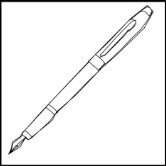
Conklin All American Courage Red Review
collectorofmanythings posted a topic in Fountain Pen Reviews
Today, I am reviewing the Conklin All American Limited Edition Courage Red pen. First of all, in my opinion Conklin get a lot of unnecessary bad press. While brands like Edison get wonderful reviews for their pens which often are around 170 bucks that come with a steel nib, and Conklin which also of... -
The Sailor Pro Gear Slim is one of those pens that I have wanted quite early on in the hobby. On paper ( no pun intended ), it has a lot of things going for it; it's attractive and well built, and for many, will probably be one of their first gold-nibbed pens ( my first modern one ). Was it worth th...
- 8 replies
-
- sailor
- pro gear slim
-
(and 1 more)
Tagged with:
-
Hello, I like any advice or hint to change the colour band for another one. There is any difference between the ones that got just the colour band and the ones with the white bands too as happen with the Patrician crown caps tops some of them got to screw them and some others just pushing by frictio...
- 1 reply
-
- waterman
- waterman 7
-
(and 4 more)
Tagged with:
-
I am looking for a particular fountain pen from Montblanc. I believe it is a Meisterstuck fountain pen. I have attached the photo. It is the middle one with a name color of what may seem to be like a Crimson red or some thing. Does anyone know which model this one is exactly? I first encountered thi...
-
Hip stationers "Berlin Notebook" released the excellent Blue No.1 ink a few months back. What colour would you guess, their second ink would be? Well obviously ... blinding neon pink! Like Blue No.1 it's an artist created ink, in this case Caroline Corleone, who has an interesting tale to tell abo...
-
A few months ago Fountain Pen Revolution released a new line of inks under their brand - starting with three colours, though it's now expanded to six. These inks, according to their webpage, are made in the US, in partnership with "another small family business". I ordered all three (plus their ex...
- 2 replies
-
- fountain pen revolution
- ink
-
(and 2 more)
Tagged with:
-
Manufacturer: Cross Series, colour: Red Pen: Waterman Hemisphere „F” Paper: Image Volume (gramatura 80 g / m2) Specifications: Flow rate: very good Lubrication: good Bleed through: possible point Shading: noticeable Feathering: unnoticeable Saturation: very good A drop of ink smeared with a ni...
-
Sharing the pictures of my new Deccan Author Red Ebonite eyedropper pen. There are 2 previous posts discussing about the acrylic versions of this pen: https://www.fountainpennetwork.com/forum/topic/216836-deccan-aurelius-author/https://www.fountainpennetwork.com/forum/topic/224094-the-deccan-aurel...
-
Another Diamine ink in the Cult Pen exclusive 'Deep Dark' range has arrived. If you have been looking for a very dark red ink, this one is for you. I absolutely love the colour and it is one of the few red inks I would use in the office. Oh, and it has both shading and sheen! Form an orderly queue...
-
Recently, I acquired several samples of Taccia Ink. Taccia Ink is newly developed in California, but made in Japan by experienced ink makers. There are 13 colors that are vibrant and pleasurable. The inspiration for the colors comes from the "Japanese way of seeing colors in a pure, honest and in...






